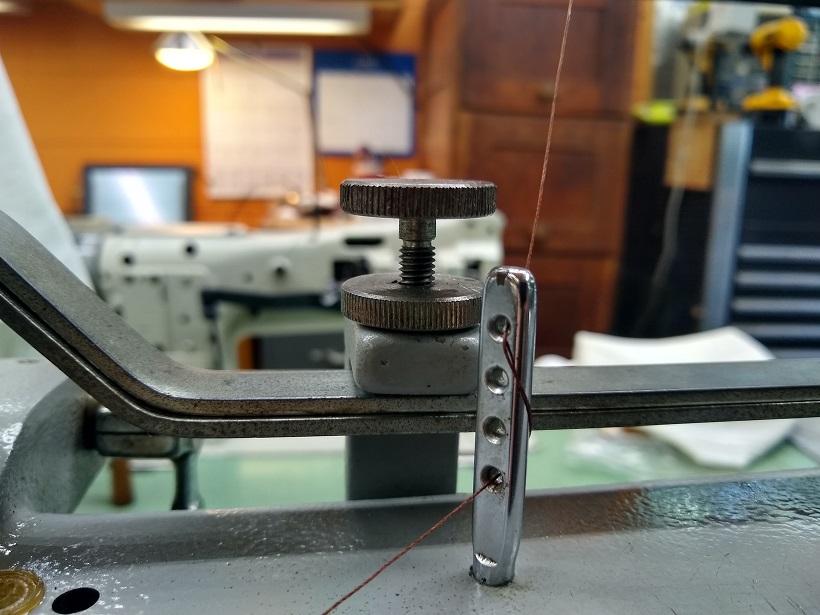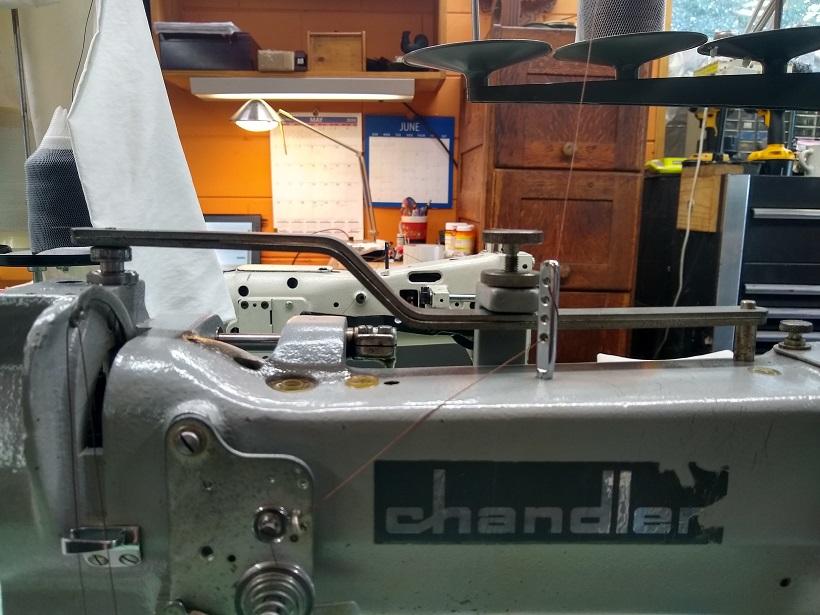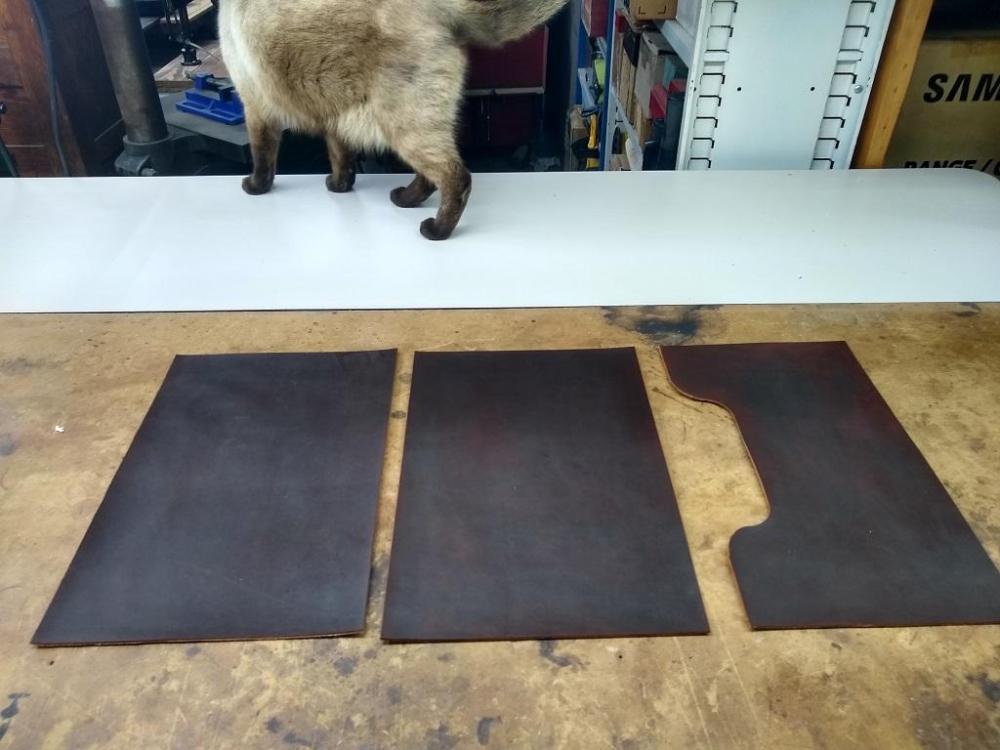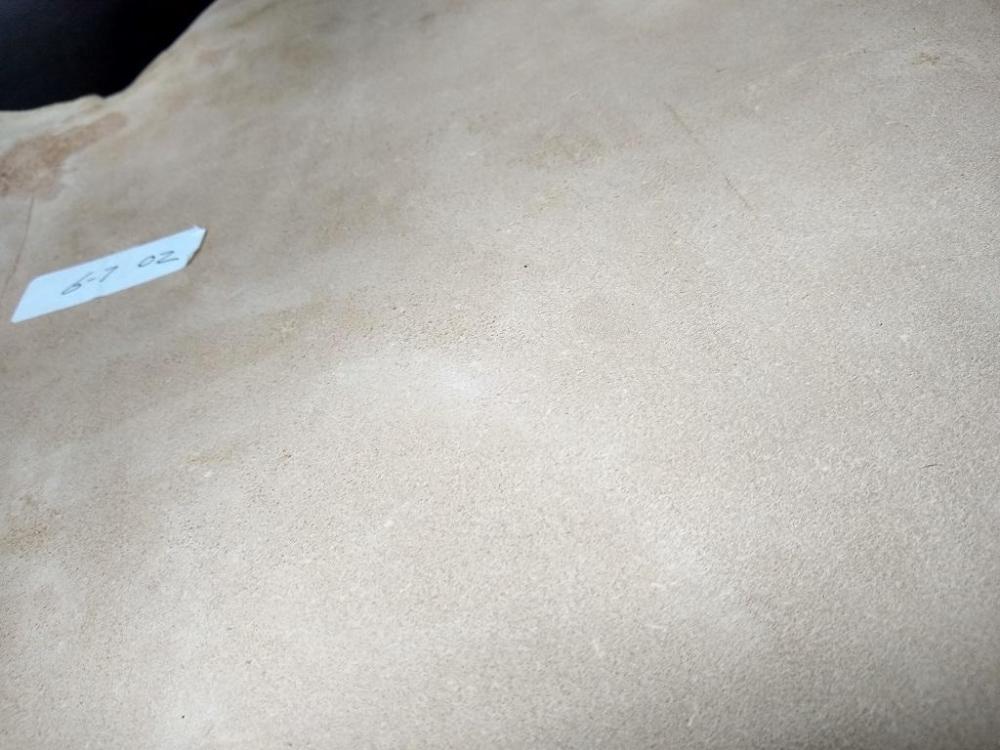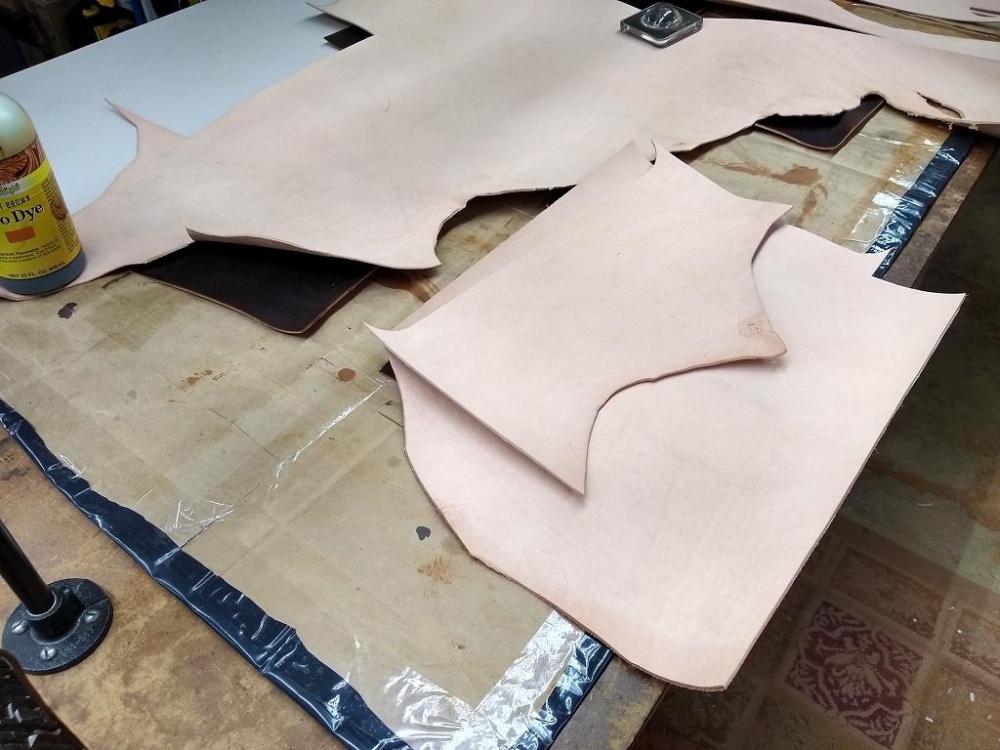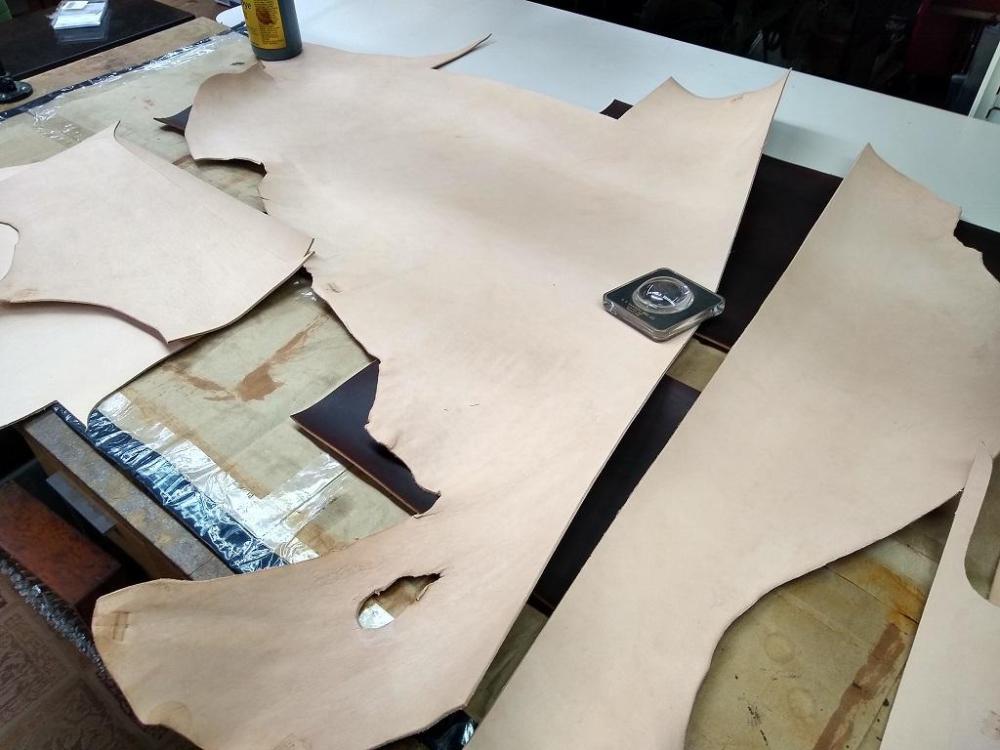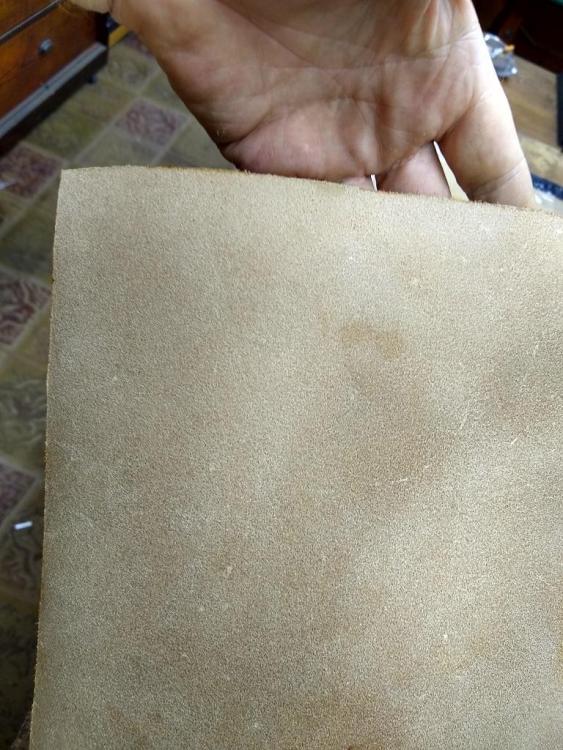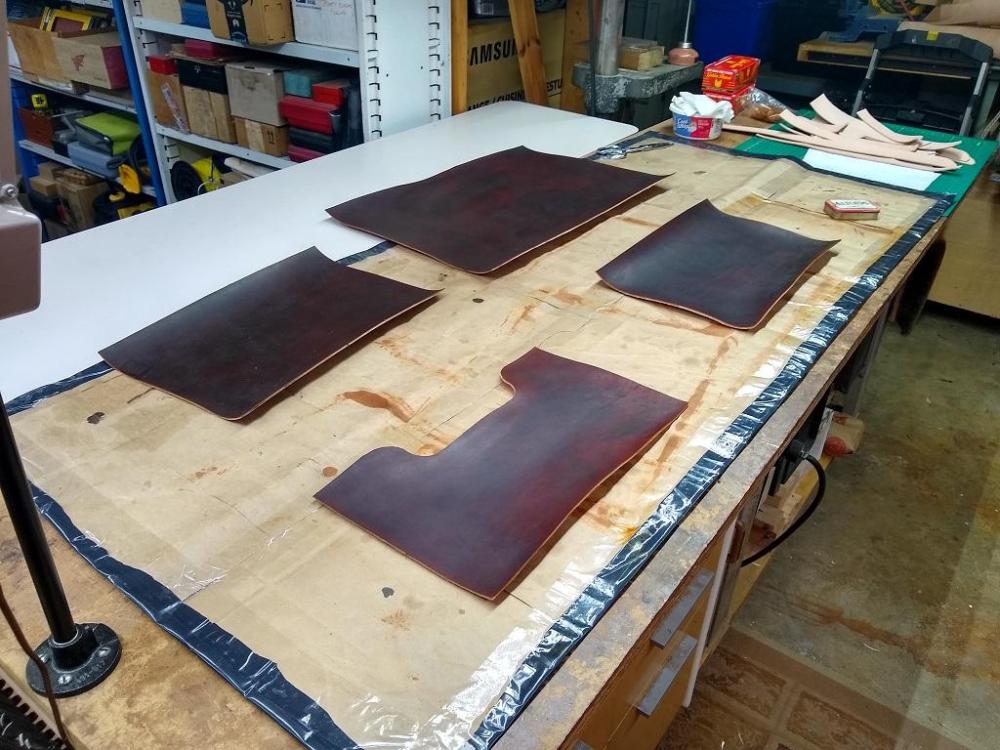
mcguyver42
Members-
Posts
58 -
Joined
-
Last visited
Profile Information
-
Location
central florida
-
Interests
homesteading,cooking,cast iron,history,
LW Info
-
Leatherwork Specialty
purses,bags and personal items
-
Interested in learning about
an artisan trade
-
How did you find leatherworker.net?
internet, while researching sewing machines
Recent Profile Visitors
3,781 profile views
mcguyver42's Achievements

Member (2/4)
-
Adler 67-gk-373 presser bar tension adjustment
mcguyver42 replied to mcguyver42's topic in Leather Sewing Machines
Got it, for German machines the spec is Gudentight for thicker denser materials and lesserso for lighter materials until everything seems to be sewing properly, but always with the minimum tension needed. Well thank you, that gets me moving forward again without wondering that I'm missing something. -
Adler 67-gk-373 presser bar tension adjustment
mcguyver42 replied to mcguyver42's topic in Leather Sewing Machines
Well, that's what they say, but that's about all they say. Of course there is no gauge to measure the pressure being applied to the material, that would be ridiculous, but is there some guidance beyond "tighten until it seems about right" -
Well my Adler 67-gk373 is sewing pretty darn well. After much grief to get it to that point, it turns out that I am a hand sewer and looking to sell it. The machine is normally set up for 138 thread and a little heavier material. To get it ready to start showing it, I set it up for 92 thread and was sewing off 2 thickness's of vinyl and noticed that it doesn't thump. I was having trouble hitting the same holes while back stitching, but that could very well be a loose nut behind the wheel because I am no machine sewer. I started putting 2 and 2 together and realized my presser bar tension might be off. I looked through the adjustment manual, (which I was able to get through with all of your generous help). No mention of it, and I don't remember why I had it at the minimum tension setting. I thought it might be a user adjustment, but found the user manual to be lacking. Does anyone know what that knurled knob thingy on top of the double leaf springs is for? Is it a user adjustment? Surely you don't want it to be tighter than it needs to be, because that's a lot of stress on a lot of parts.
-
Sounds like diluted dye applied with an airbrush might be thriftier too. At $25 - $30 a quart this stuff gets pricey in a hurry. And not all bottles are full by the way, some up to the cap, and some 1 1/2" down the neck. We are talking fluid oz. here, so I don't know? I've seen powdered dyes offered by some suppliers that you mix up with denatured alcohol. Denatured alcohol is out of control now though, mostly methyl alcohol, and who knows what else. Woodworkers don't want to use it in their shellac anymore, and are resorting to Everclear if they can get it. The same applies to us. Between that and the alcohol drying out the leather, it's making me want to take a hard look at water based dyes. Or other ways to dye leather? Any input on that?
- 17 replies
-
- when to oil
- dry leather
- (and 5 more)
-
I gotta try to design some gusset's now, I better up the cat treats
- 17 replies
-
- when to oil
- dry leather
- (and 5 more)
-
Update for what it's worth. I'm a beginner so verify anything that I say. For me, I think I found my test to see if my veg tan leather needs to be oiled Find a waste spot on the leather and scratch a short line. It should emboss a line instead of just scratching through the top of the grain. oil if needed without being too heavy handed as Fredk cautions, wait the requisite 24 hours and retest. I did that on the side under discussion, and my knife slices right through in one light to medium effort pass with maybe a fiber or two hanging on.
- 17 replies
-
- when to oil
- dry leather
- (and 5 more)
-
If I understand Burkhardt, are you saying that you oil leather that is already in good condition before dyeing as a sort of damage control, and then again after? Mine was dry to start with. It sucked the dye right out of the sheep's wool as soon as it touched, I couldn't control it. I used so much light brown dye that it ended up chocolate. But going back to that water thing, I didn't know how much soap to use and didn't want to overdo it, so I just cased it real good with water. You and Chuck both said that the surface tension would be reIeased during normal handling over the course of the build. But, I worked it through folding the edges back gently, and not being overly forceful as you said. I cupped my hand over the interior portions and used my fingers to push up some from the bottom. I could see a pull up effect on the leather when I was doing that and could feel the leather relaxing. lo and behold, it lays nice and flat. I let it dry overnight with a cutting board laying on top of it for good measure. The picture is from the next morning. Problem solved! I'm looking forward to finding a recipe for the oil, dye and water if anyone has one.
- 17 replies
-
- when to oil
- dry leather
- (and 5 more)
-
FredK also mentioned putting a little hot water in the mix. So if I put say a pint of oil in a pot, how much soap and water? and we are discussing regular dish washing liquid here? I feel that I've oiled this leather enough, and that any more would be too much. Actually it's becoming tan on the back side, and I hope I don't run into any glue stick issues. Still, I wish there was some kind of test, (A moisture meter on wood for example). I compared my dyed and oiled pieces to the untreated portion of the side to try to discern some differences that I could call "tests": examining the cellular structure of the edges with a magnifying glass, trying to note different sounds when rubbing the back side with my fingers and fingernails. I couldn't pinpoint any notable differences. The grain does appear to be thinner and more defined on the oiled pieces, but that could just be the dye. I think the expected weight when you pick up similar sized pieces is a little different. The oiled pieces do make more of a satisfying smack sound when I drop them onto the workbench. A thumbnail impression is definitely more self healing on the non oiled pieces. I know that I'm over analyzing, and should just let experience take it's course, but I bought quite a lot of leather in the beginning. It wasn't top quality to begin with and it's been in storage for 3-4 years. I'm concerned with losing the whole lot of it if I don't learn how to take care of it. When I say storage, I mean in the house under heat and air and out of the light. I'll try all of your suggestions, definitely oil with soap before I cut out and dye the rest of the pieces. At least it reassuring to know the curling is normal, I appreciate the experience and encouragement.
- 17 replies
-
- when to oil
- dry leather
- (and 5 more)
-
The first backside picture is of the really curled up piece. The other 2 backside pictures and the 2 grain side pictures are from the side that the pieces were cut from. I really appreciate your input. I think the project is a flop at this point. I'll go ahead and build it for the practice, but I shure would like to learn from this. Thanks
- 17 replies
-
- when to oil
- dry leather
- (and 5 more)
-
- 17 replies
-
- when to oil
- dry leather
- (and 5 more)
-
- 17 replies
-
- when to oil
- dry leather
- (and 5 more)
-
- 17 replies
-
- when to oil
- dry leather
- (and 5 more)
-
It seemed like the leather was reasonably pliable. I just rolled out the rest of the hide on the bench for a look at it. Possibly it may feel a little light for the size but I'm not sure. What does the soap do? I gave it a very heavy oiling with olive oil a few hours after the dye up. The next morning I gave it another very heavy oiling, and then two more heavy oilings. It didn't soak the oil up near as fast on the last oiling or two, and I was able to rub it in circles and even out the blotchy dye job some. Still it came out much darker than the intended light brown, and the pieces are curled. I didn't mention this before because the curling was already very evident, and I didn't want to add variables that may not apply. There were some spots on the leather from the workshop. I tried 3 of the methods that are well agreed upon by members here. (Alcohol, 50/50 lemon juice and water, oxalic acid)
- 17 replies
-
- when to oil
- dry leather
- (and 5 more)
-
Hello, I've been at leathercraft for a few years now, but I don't have a lot of hands on unfortunately. I'm really struggling with being able to evaluate leather for proper suppleness/ oil content? I am making a briefcase for my son. I selected a 6-7 oz veg tan side from my leather collection. It's a Tandy hide, probably Brazilian grade C, not terrible looking, not been oiled since I have had it. I rolled it out on my bench and had to weight both ends to hold it down while cutting out my pieces. My scratch awl didn't make a very convincing groove or line to follow; it was very shallow, almost like a light cat scratch and I had to look at it from different angles to see my cut lines. I had to make 4 or 5 passes with a reasonably sharp round knife. My knife would get stuck, and I had a few skip offs. I ended up pulling it towards me, and even using it like a strap cutter. My big pieces were still wanting to curl up by an inch or more, even after laying out on the bench for a few days. I had a disaster of a dye up and pretty sure now that I should have oiled my leather. I'm wondering if some of the above should have been clues that this hide needed oil? What do you guys look for when you are evaluating a hide for it's overall condition and usability? Do you have some tests that you make on the leather, or do you just know by feel and sight? How does temper figure in there? Is firm temper leather just dryer leather? Thanks in advance, Guy
- 17 replies
-
- when to oil
- dry leather
- (and 5 more)
-
Manufacturer's Supply Company Bell Skiver Project
mcguyver42 replied to mcguyver42's topic in Leather Machinery
If anyone thinks they can use this thing or any parts off of it, they are yours to have. It has quite a bit of wear on the feed roller lugs. Any parts that are subject to wear are likely just as bad as yours. All of the knobs and such are there, and I have two count them two covers for the pulley side. I'll hang on to it for a while. If anyone is interested you can contact me for pictures of individual parts. I live just outside of Orlando Florida if you want to come and get it.- 20 replies
-
- leather paring
- bell skiver
-
(and 1 more)
Tagged with:



